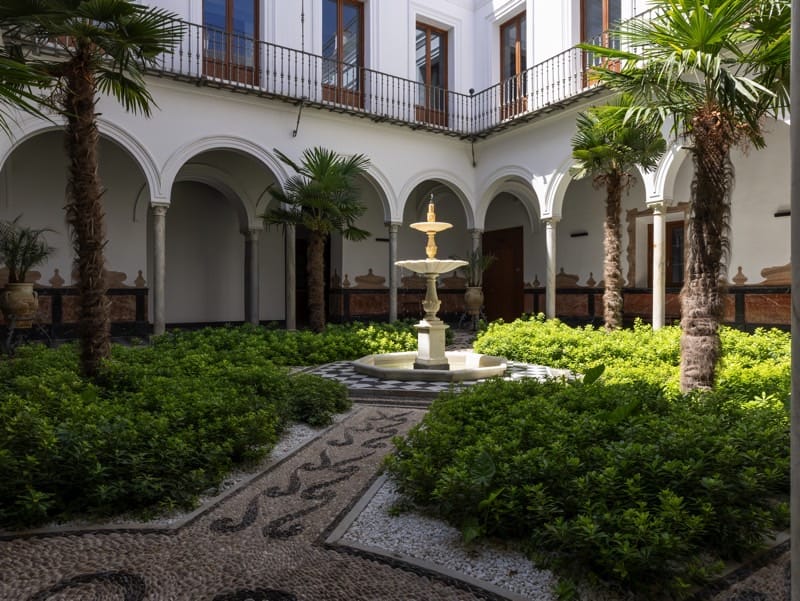

The monumental ensemble in the center of Seville, declared a World Heritage Site by UNESCO, comprises three monuments. The first one is the Cathedral of Santa María de la Sede, the gothic temple with the largest surface in the world and symbol of the city. Built on the site of the former Great Mosque of the 12th century, it preserves its old minaret—the current Giralda—and the Patio de los Naranjos (Orange Trees Courtyard). At the panoramic bar La Terraza del EME, located facing the Cathedral, you can enjoy one of the best views of the city while sipping a cocktail. Calle Alemanes, 27.

Very close to the Cathedral is the Royal Alcázar, one of the world oldest palaces still in use, renowned for its unique blend of Islamic, Mudéjar, and Renaissance art. Its lush gardens, courtyards, and halls tell centuries of royal history. Also choosen as "Game of Thrones" filming location, it's one of Spain's most visited monuments.

Next to the Alcázar is the third UNESCO World Heritage Site, the General Archive of the Indies, conceived by Spanish King Charles III in the 18th century to centralize in one place the documentation relating to the administration of Spain's overseas territories, of enormous historical value.

Built in the 13th century, the Torre del Oro (Tower of Gold) formed part of the defensive wall that surrounded the city and protected it from ships entering via the Guadalquivir River. Over the centuries, it served as a chapel, a gunpowder store, and a prison. Declared a historical-artistic monument, it now houses the Maritime Museum. Complete your visit to the Arenal district by exploring the area around Plaza Nueva and enjoying a cocktail at the sophisticated FIZZ Bar in the Hotel Mercer Sevilla. Calle Castelar, 26.

Seville boasts numerous popular and diverse squares, such as Plaza de Doña Elvira (the most romantic), Plaza de las Cruces and Plaza de Santa Cruz (both in the Jewish Quarter), Plaza del Triunfo (surrounded by Seville's three UNESCO World Heritage monuments), and Plaza del Cabildo, characterized by its semicircular shape (in the Arenal district).

Discover Seville's rich pottery tradition at the Triana Ceramics Centre. Housed in a former ceramics factory, it showcases the evolution of Sevillian ceramic art from the Almohad period to the present day, featuring historical pieces and unique techniques. Experience an essential part of local culture in one of Seville's most vibrant neighborhoods.

Popularly known as "Las Setas" (The Mushrooms), Metropol Parasol is the world's largest wooden structure, designed by architect Jürgen Meyer in the central Plaza de la Encarnación. It houses a traditional market, restaurants, the Antiquarium archaeological museum, and is crowned with a viewpoint overlooking the old town. Every night it offers "Aurora," a spectacular light and color show that illuminates Seville.

Feria Street owes its name to the "Thursday Market" held there since the 13th century, one of the oldest in Europe. Today, it's a this fea market selling antiques and secondhand goods. Nestled within the Moorish walls that once surrounded the city, Feria Street is one of Seville's most distinctive streets, a picturesque blend of tradition and modernity.

The Church of the Annunciation was built in the 16th century by Hernán Ruiz II for the Society of Jesus. After the expulsion of the Jesuits, it passed into the hands of the University of Seville in the 18th century. The church's former crypt houses the Pantheon of Illustrious Sevillians, containing the remains of figures such as the Sevillian poet Gustavo Adolfo Bécquer (1836-1870).

26 charming suites in the spectacular Marquises of Nervión Palace-House
More information